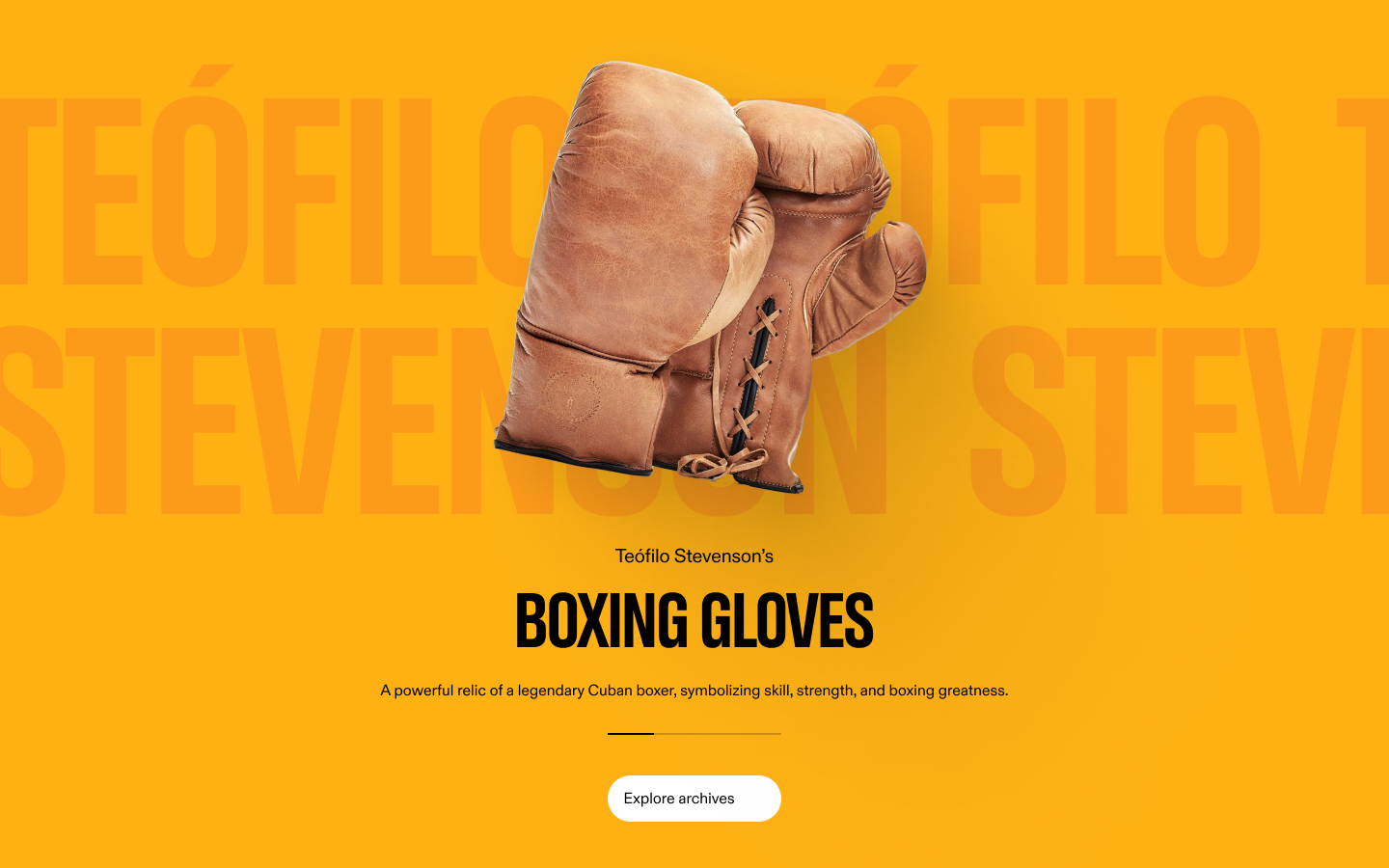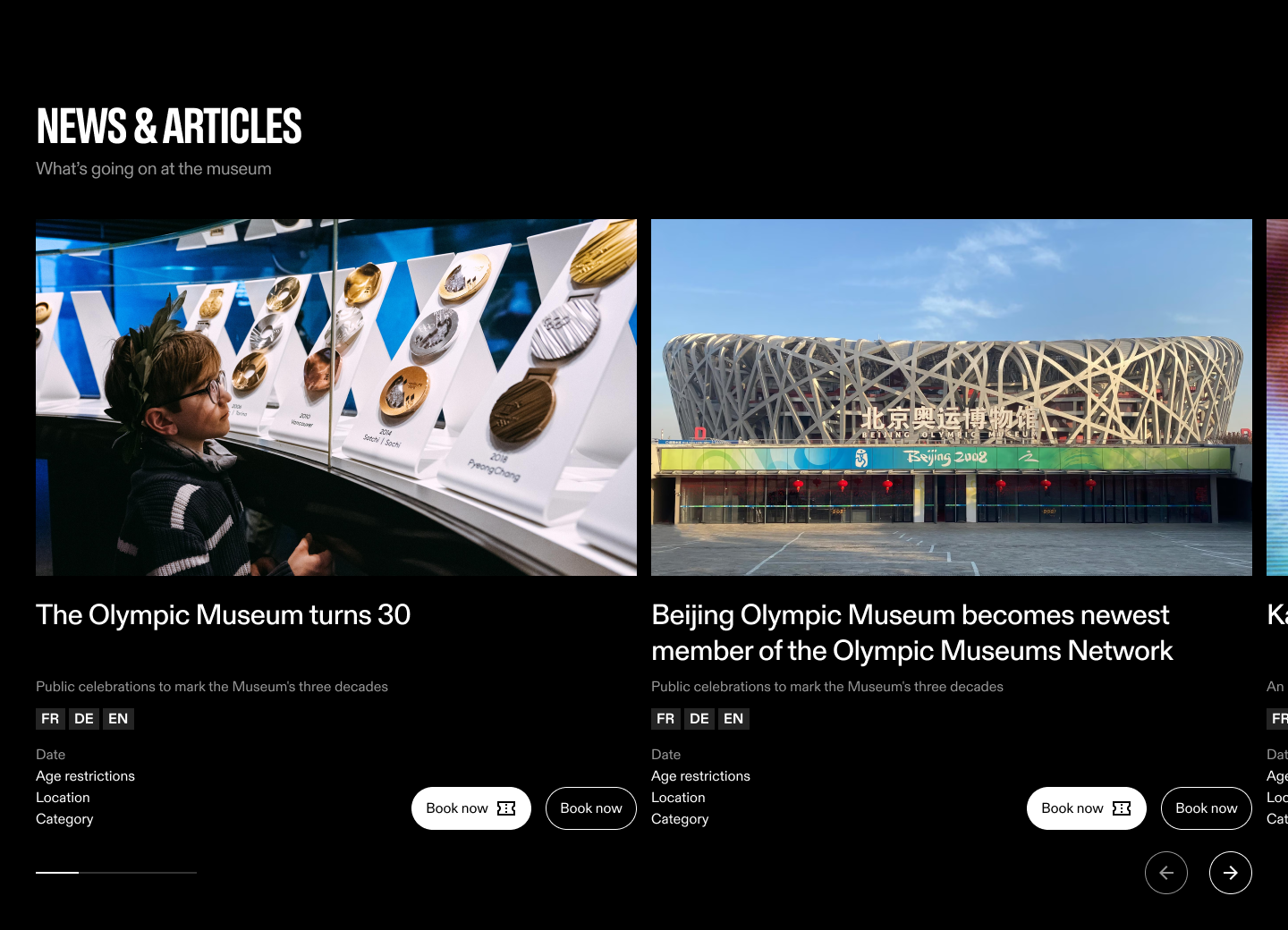Olympic Museum
A new destination for fans to dive into Olympic art, culture, and education.
Role
UX Designer
Team
2 UX, 2 UI, 3 Creative Directors, 2 Account Managers, 5 Developers
Timeline
10 weeks, May - July 2023
Overview
Celebrating the game’s legacy and inviting fans to visit the museum.
Redesigning the Olympic Museum website was part of a wider digital strategy for the Olympic Foundation of Culture and Heritage (OFCH). With a new website, OFCH aimed to celebrate the emotional and historical moments of the Games, introduce a new brand, and reposition itself as a museum worth exploring, both online and in the real world.
I led the UX design of the site with guidance from creative and UX directors, collaborating closely with UI Designers on client delivery and final design.
View live site
Business goals
Inspiring people to ‘live Olympic’ during and between the games.
Grow engagement
The Olympics is not just for sports fans. There’s history, values, art, and stories that reflect humanity’s greatest potential. OFCH wanted to bring in new audiences and surface what the Olympics has to offer outside of the Games.
Boost affinity for the brand
Move away from a transactional, top-down strategy to one that resonates with what people want: emotions they can relate to, inspiring stories, and entertainment.
Position the museum as the house of Olympism
The museum has the potential to be more than a local museum. With the digitization of artifacts and a variety of media assets, the history and spirit of the Olympics could be spread through a digital destination.
Key insights
A fragmented, static, and informational experience.
Based on an insights report, UX audit, and competitor analysis we understood where users were having challenges with the site and opportunities to broaden its audience.
-
Located in Lausanne, Switzerland, the museum receives little foot traffic or tourists. Since most visitors are local, the museum largely depends on return visits and needs ways to attract new visitors.
-
From poor navigation patterns to buried info, extra pages, and poor visual hierarchy, finding key information to plan a visit to the museum is challenging and inefficient.
-
OFCH was working on digitizing artifacts but there was nowhere on the site for users to discover these.
A seamless, immersive, and inspirational experience.
Idea
Feature artifacts on the homepage
Give visitors a preview of artifacts to get them excited to explore the archives.
We hosted these in a carousel component on the homepage so visitors saw it upon entry.
This was also a way to engage potential and remote visitors so audience reach could grow.
Design and features
Simplified IA and flyout menu
Design and features
A place to explore artifacts
To showcase the array of collections and stories behind digitized artifacts, we created an 'Explore' section.
A story format makes the museum’s vast collection approachable and dynamic from anywhere
A familiar, swipeable pattern lowers the barrier for exploration and makes the museum’s artifacts accessible to anyone.
This promotes active discovery of the collections through engaging storytelling instead of passive browsing.
Design and features
Chunk information for a streamlined user flow
The old site dispersed key information across separate pages, creating too much friction to plan a visit.
We grouped information together where it made sense so visitors had an easier time getting key information.
We reduced the number of items in the main nav, simplified the labels, and created a flyout menu to expose the second level of the IA. Less decisions for users, easy to read, and clear language makes wayfinding intuitive.
Impact
Better flows, repositioned brand, and exposure to a global audience.
OFCH wanted to grow engagement, reposition themselves as the house of Olympism, and grow affinity for the brand.
While post-launch metrics were unavailable, I believe we could measure performance with the following:
Simplified key journeys
Information that once took multiple clicks is now accessible directly from the navigation or core landing pages. This reduced friction made essential content available in as few as one or two clicks.
Positioned for audience growth
We aimed to make content discoverability easier through a clear navigation structure and improved IA. If we saw users reaching target pages in fewer clicks/more efficient paths, and if there were lower dropoff rates, we could assume the navigation and IA were supporting the discovery of new content.
Measuring engagement in the new ‘Explore’ section through increased page views, more unique and returning visitors, deeper scroll depth, and more time on page would indicate audience growth.
More case studies










